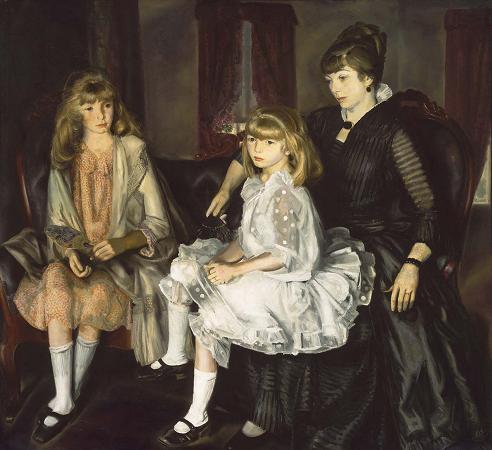Raphael Soyer (1899 - 1987). Raphael Zalman Soyer was a Russian-born American painter, draftsman, and printmaker. Soyer was referred to as an American scene painter. He is identified as a Social Realist because of his interest in men and women viewed in contemporary settings which included the streets, subways, salons and artists' studios of New York City. He also wrote several books on his life and art. His brothers Moses Soyer and Isaac Soyer were also painters. He was born as Raphael Schoar. He and his identical twin brother, Moses, were born in Borisoglebsk, Tambov, a southern province of Russia, on December 25, 1899. Their father, Abraham Shauer, a Hebrew scholar, writer and teacher, raised his six children in an intellectual environment in which much emphasis was placed on academic and artistic pursuits. Their mother, Bella, was an embroiderer. Their cousin was painter and meteorologist, Joshua Zalman Holland. Due to the many difficulties for the Jewish population in the late Russian Empire, the Soyer family was forced to emigrate in 1912 to the United States, where they ultimately settled in the Bronx. The family name changed from Schoar to Soyer during immigration. Raphael pursued his art education at the free schools of the Cooper Union between 1914 and 1917, studying alongside his twin Moses. It was at Cooper Union where he met Chaim Gross, who became a lifelong friend from that time. He continued his studies at the National Academy of Design from 1918 until 1922 and, subsequently, at the Art Students League of New York intermittently between 1920 until 1926. While at ASL, he studied with Guy Pene du Bois and Boardman Robinson, taking up the gritty urban subjects of the Ashcan school. After his formal education ended, Soyer became associated with the Fourteenth Street School of painters that included Reginald Marsh, Isabel Bishop, Kenneth Hayes Miller, Peggy Bacon and, his teacher, Guy Pene du Bois. Soyer persistently investigated a number of themes, female nudes, portraits of friends and family, New York and, especially, its people, in his paintings, drawings, watercolors and prints. He also painted a vast number of self-portraits throughout his career. Soyer was adamant in his belief in representational art and strongly opposed the dominant force of abstract art during the late 1940s and early 1950s.
more...






